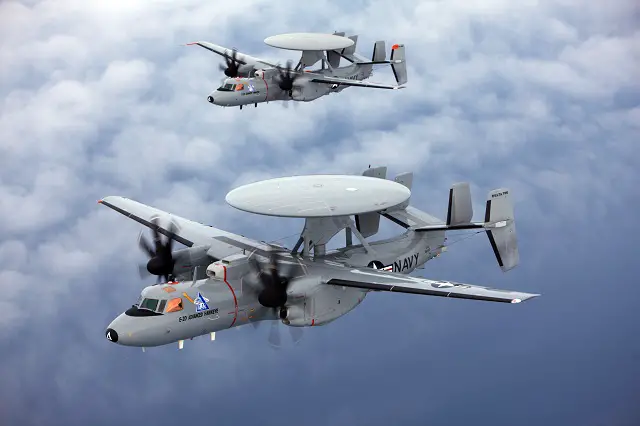Raytheon
Company and the U.S. Navy demonstrated the capability of the newest
version of the Joint Standoff Weapon (JSOW) C-1 by establishing communications
among an F/A-18E/F Super Hornet aircraft, an E-2D Advanced Hawkeye aircraft
and the JSOW C-1.
The test was part of the Navy's Trident Warrior 2013 demonstration in
July. During the demonstration, fighters simulated the launch of a JSOW
C-1 while the E-2D directed the weapon toward the positively identified
target. The E-2D aircraft also received status updates sent from the
JSOW C-1. |
"The
success of the Trident Warrior 2013 demonstration proves the feasibility
of providing the fleet a means of executing the complete kill chain
with carrier-based assets utilizing the F/A-18E/F, JSOW C-1 and E-2D
to engage maritime targets at range," said Cmdr. Errol Campbell,
the U.S. Navy's Precision Strike Weapons program office deputy program
manager for the JSOW program.
Additionally, the team was able to track and designate a target; simulate
the launch of the JSOW; send, receive and acknowledge target updates;
and receive bomb hit indication data from the weapon.
"This test further verifies the flexibility and seamless plug-and-play
connectivity of JSOW C-1's network-enabled capability," said Celeste
Mohr, JSOW program director for Raytheon Missile Systems. "The
test demonstrates the relative ease with which the U.S. Navy can build
on the ongoing integration of the JSOW C-1 on the U.S. Navy's F/A-18
and expand the interoperability and connectivity to a fielded carrier-capable
tactical airborne early warning aircraft."
In 2009, the Navy performed a similar demonstration of connectivity
and interoperability among sensor platforms, a shooting platform and
the JSOW C-1 during the Joint Surface Warfare Joint Capability Technology
Demonstration. This demonstration involved a P-3 Orion aircraft's littoral
surveillance radar system and an E-8C Joint Surveillance Target Attack
Radar System aircraft. |
About
the Joint Standoff Weapon
JSOW is a family of low-cost, air-to-ground weapons that employ an integrated
GPS-inertial navigation system and terminal imaging infrared seeker.
JSOW C-1 adds the two-way Strike Common Weapon Datalink to the combat-proven
weapon, enabling a moving maritime target capability.
» JSOW C-1 is the world's first network-enabled weapon with a
range of more than 100 kilometers.
» The U.S. Navy's first two JSOW C-1 free-flight tests also resulted
in direct hits on their moving ship targets.
» The low cost, low risk development spiral of JSOW ER extends
the standoff range to more than 250 nautical miles. The JSOW family
is the only internally carried anti-surface warfare and integrated air
defense standoff weapon on the F-35A and F-35C aircraft roadmap. |

